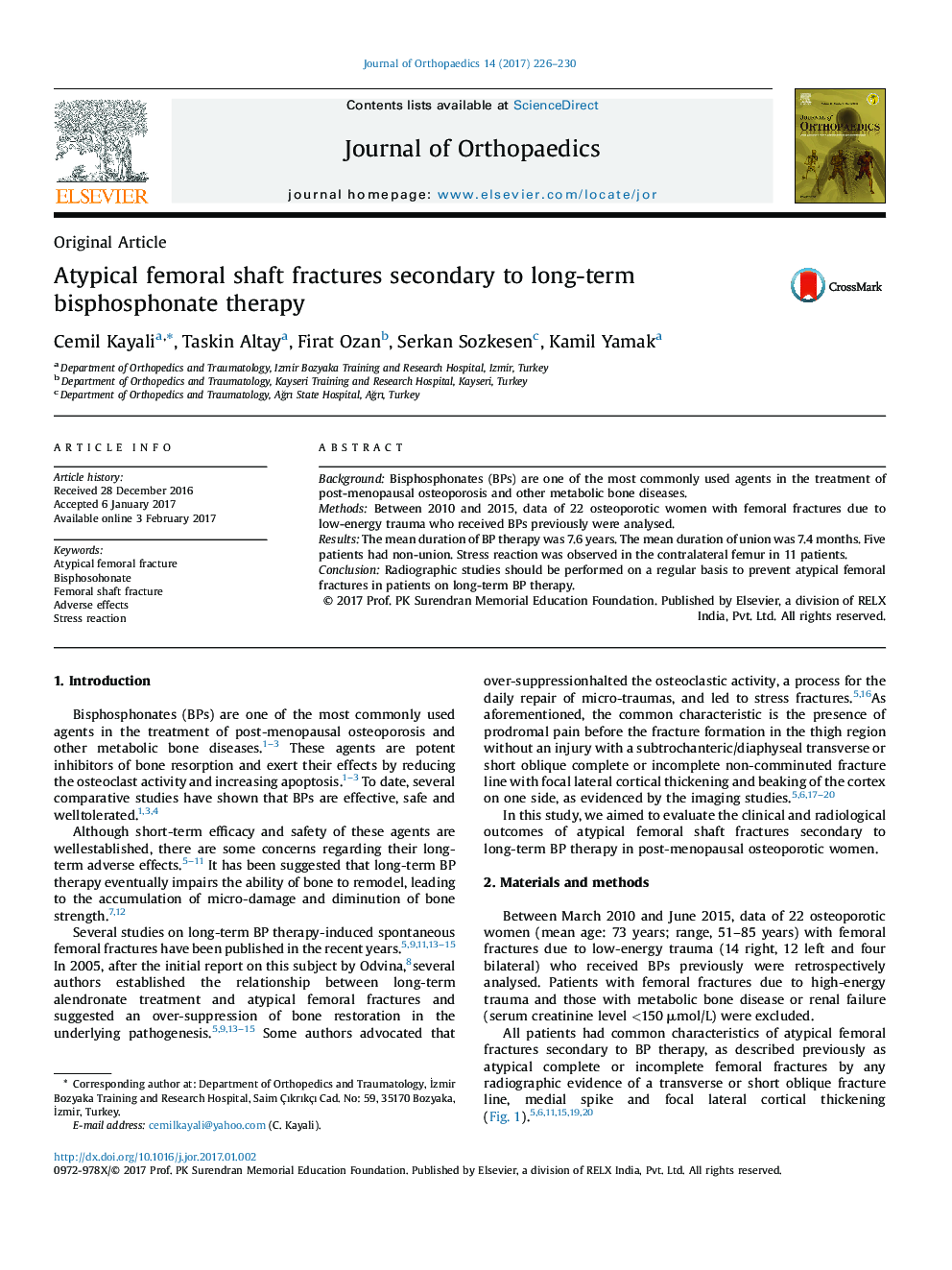| Article ID | Journal | Published Year | Pages | File Type |
|---|---|---|---|---|
| 5654149 | Journal of Orthopaedics | 2017 | 5 Pages |
â¢Although short-term efficacy and safety of Bisphosphonates (BPs) agents are well established, their long-term adverse effects still remain to be elucidated.â¢Long-term BP therapy inhibited bone turnover in the majority of patients, as confirmed by bone biopsy analysis.â¢Common clinical characteristics of atypical femoral fractures secondary to long-term BP include pain lasting for a couple of months, absence of injury history and bilateral femoral fractures in selected cases.
BackgroundBisphosphonates (BPs) are one of the most commonly used agents in the treatment of post-menopausal osteoporosis and other metabolic bone diseases.MethodsBetween 2010 and 2015, data of 22 osteoporotic women with femoral fractures due to low-energy trauma who received BPs previously were analysed.ResultsThe mean duration of BP therapy was 7.6 years. The mean duration of union was 7.4 months. Five patients had non-union. Stress reaction was observed in the contralateral femur in 11 patients.ConclusionRadiographic studies should be performed on a regular basis to prevent atypical femoral fractures in patients on long-term BP therapy.
